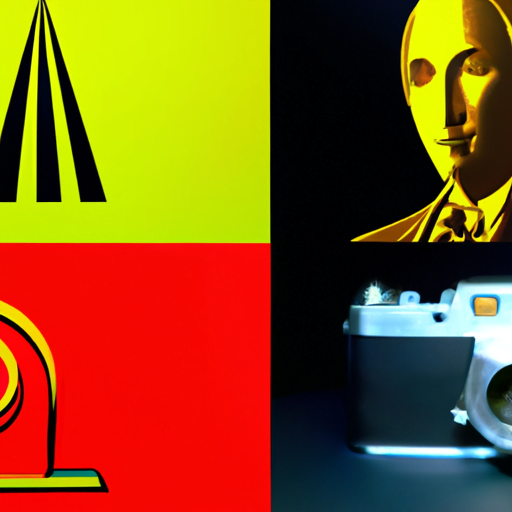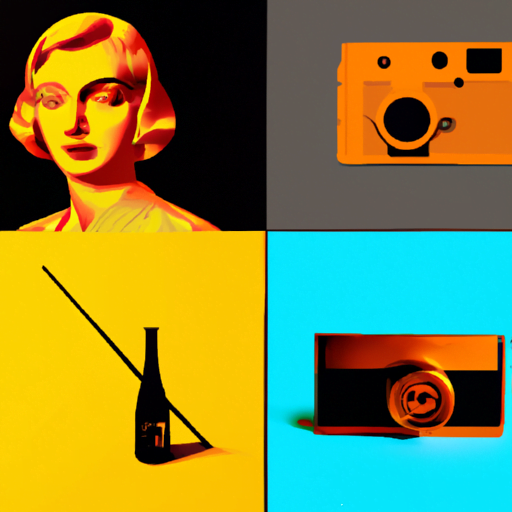
-
Table of Contents
The Influence of Art Deco on Modern Graphic Design

Art Deco, a design style that emerged in the 1920s and 1930s, continues to have a significant influence on modern graphic design. Its distinctive geometric shapes, bold colors, and luxurious aesthetic have made it a timeless source of inspiration for designers. In this article, we will explore the key elements of Art Deco and how they have shaped the world of graphic design today.
1. Origins of Art Deco
Art Deco originated in France after World War I and quickly spread across Europe and the United States. It was a response to the ornate and elaborate Art Nouveau style that dominated the late 19th and early 20th centuries. Art Deco embraced modernity, technology, and the machine age, reflecting the optimism and progress of the time.
2. Key Elements of Art Deco
Art Deco is characterized by several key elements that distinguish it from other design styles:
- Geometric Shapes: Art Deco often features bold geometric shapes such as squares, triangles, and circles. These shapes are used in both architectural and graphic design to create a sense of order and symmetry.
- Streamlined Forms: Inspired by the sleek lines of modern transportation and machinery, Art Deco favors streamlined and simplified forms. This emphasis on clean lines and smooth curves can be seen in both furniture design and graphic compositions.
- Rich Colors: Art Deco embraces a vibrant color palette, including bold primary colors such as red, blue, and yellow, as well as metallic accents like gold and silver. These colors are often used in contrast to create visual impact.
- Decorative Patterns: Art Deco incorporates decorative patterns such as zigzags, chevrons, and sunbursts. These patterns add visual interest and create a sense of movement and energy.
- Luxurious Materials: Art Deco is associated with luxury and opulence. It often incorporates materials such as marble, chrome, and glass to create a sense of glamour and sophistication.
3. Art Deco in Graphic Design
The influence of Art Deco on graphic design can be seen in various ways:
- Typography: Art Deco typography is characterized by bold, geometric letterforms. It often features strong vertical or horizontal lines and incorporates decorative elements such as elongated serifs or stylized geometric shapes.
- Poster Design: Art Deco posters are known for their striking visual impact. They often feature bold colors, geometric shapes, and stylized figures. These posters were used to promote everything from travel destinations to consumer products.
- Logo Design: Many modern logos draw inspiration from Art Deco. The clean lines, geometric shapes, and luxurious aesthetic of Art Deco make it a popular choice for creating memorable and visually appealing logos.
- Editorial Design: Art Deco has also influenced editorial design, particularly in magazine layouts. The use of bold typography, geometric shapes, and decorative patterns can be seen in the design of magazine covers and spreads.
4. Case Studies
Several notable examples demonstrate the enduring influence of Art Deco on modern graphic design:
- The Empire State Building: The iconic Art Deco design of the Empire State Building in New York City showcases the style’s influence on architecture. Its sleek lines, geometric motifs, and use of luxurious materials make it a prime example of Art Deco design.
- The Great Gatsby: The 2013 film adaptation of F. Scott Fitzgerald’s novel “The Great Gatsby” brought Art Deco back into the spotlight. The film’s promotional materials, including posters and title sequences, embraced the style’s glamorous aesthetic.
- Art Deco Revival: In recent years, there has been a resurgence of interest in Art Deco design. Many contemporary designers and artists draw inspiration from the style, incorporating its elements into their work while adding a modern twist.
5. The Continued Relevance of Art Deco
Despite being nearly a century old, Art Deco remains relevant in modern graphic design. Its timeless aesthetic and strong visual impact continue to captivate audiences. The clean lines, bold colors, and decorative patterns of Art Deco provide designers with a versatile toolkit for creating visually striking and memorable designs.
6. Conclusion
Art Deco has had a profound influence on modern graphic design. Its distinctive elements, such as geometric shapes, streamlined forms, rich colors, decorative patterns, and luxurious materials, continue to shape the world of design today. From typography to poster design, Art Deco’s impact can be seen in various aspects of graphic design. As designers continue to draw inspiration from the past, Art Deco remains a timeless source of creativity and inspiration.
